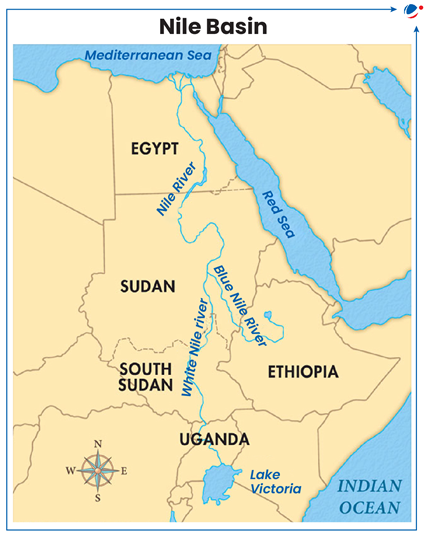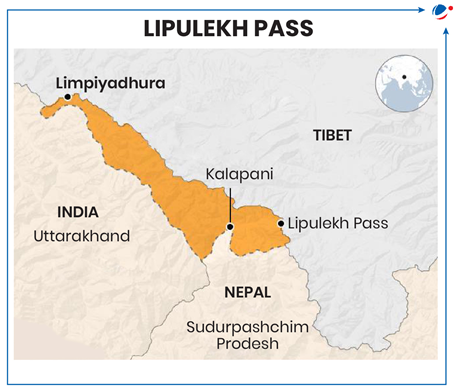Nile Basin

Recently, agreement on the equitable use of water resources from the Nile River basin has come into force despite the notable opposition of Egypt.
About Nile Basin
- The Nile is the world’s longest river and has a drainage area of nearly 10% of the landmass of the African continent.
- Runs through 11 countries from south to north.
- 2 main tributaries: White Nile (Originate from Burundi and Rwanda) and Blue Nile (originating in Ethiopia).
- Other tributaries: Sobat River, Atbara River, Bahr el Ghazal, etc.
- Tags :
- Nile Basin
- White Nile
- Blue Nile
Volcanic Eruption & Ionospheric Disturbances
A recent study by Indian Institute of Geomagnetism establishes the role of volcanism in shaping space weather.
Key findings of the study
- Ionospheric Disturbance: Volcanic eruptions produce strong atmospheric gravity waves triggering formation of Equatorial Plasma Bubbles (EPBs).
- EPBs, normally observed in the equatorial ionosphere, are depletions in ionospheric plasma density formed during post-sunset hours.
- Impacts Satellite Communication and Navigation Systems: Generated EPBs can impact satellite communication and satellite-based technologies.
Volcanism and its Impacts
- A volcano is an opening in Earth's crust through which lava, ash, and gases erupt. Recent incidents include Mount Ruang (Indonesia, 2024), Whakaari/White Island (New Zealand, 2024), etc.
Positive Impacts of Volcanic activities
- Short periods of cooling Earth’s atmosphere: Particles from volcanoes can cause temporary cooling by shading incoming solar radiation
- Source of geothermal energy: can provide free electricity for locals
- Improvement in soil fertility by ejected volcanic ash
- Provides Mining opportunities as magma brings valuable minerals to the surface.
- Others: Tourism potential; ash acts as soil fertilizer, etc.
Negative Consequences of Volcanic activity
- Impact on Climate: With the release of dust, ash, and other gases into the atmosphere.
- Lead to disasters such as Tsunami (E.g. Tonga eruptions (2022)
- Others: Leads to damage of lives, property, habitat, and landscapes
- Tags :
- Volcanoes
- Ionospheric Disturbance
Articles Sources
Lipulekh Pass

First batch of pilgrims viewed Mount Kailash (abode of Lord Shiva) from Old Lipulekh pass.
- Previously, pilgrims had to travel to Tibet Autonomous Region (TAR) to view the peak.
About Lipulekh Pass
- Location: International Mountain pass, above Kalapani valley, forming tri-junction between India, Nepal, and TAR (China).
- Situated in Vyas valley, Pithoragarh district, Uttarakhand inhabited by Bhutiya people.
- Significance: Ancient trade and pilgrimage route.
- Closed in 1962 by India fearing Chinese incursions and was reopened in 2020.
- Tags :
- Lipulekh Pass



